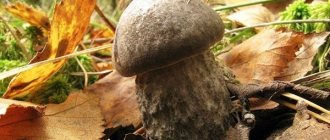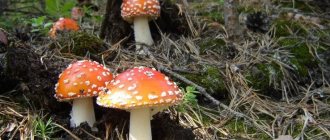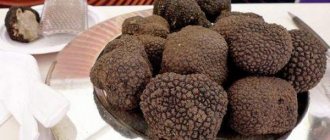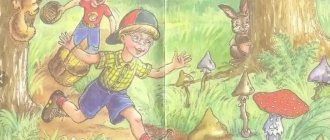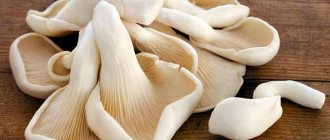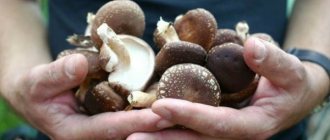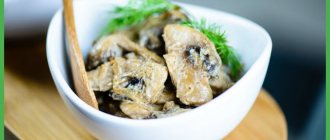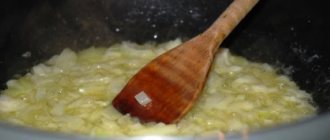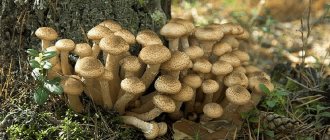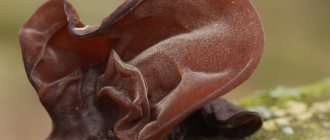Shiitake - (Japanese 椎茸、香蕈 si:take), also shiitake, edible lentinula, Japanese forest mushroom (lat. Lentinula edodes) - unique representatives of the mushroom kingdom. Their beneficial and tasty qualities are famous in all cultures. Easterners have used shiitake mushrooms for two millennia to combat various diseases. It is noteworthy that you can grow this miracle mushroom yourself.
Where do they grow?
Shiitake cultivation began in the Ancient East. In nature, it is found in forests:
- Japan;
- Korea;
- China.
In Russia, shiitake can be found in the Primorsky Territory and the Far East.
In recent decades, the mushroom has been grown in many countries:
- USA;
- Canada;
- France;
- England;
- Holland;
- Russia.
Japan is still considered the leader in industrial production.
To choose a Shiitake mushroom, it is better to pay attention to Japanese or Chinese manufacturers. In the USA and Europe, a modified product is cultivated that grows faster, but has a low content of vitamins and minerals.
In addition to shiitake, Reishi and Meitake mushrooms grow in these regions. They have similar properties and complement each other well in treatment and prevention:
- central nervous system disorders;
- inflammation and swelling;
- heart disease;
- viral and fungal diseases;
- hypertension;
- problems with the gastrointestinal tract.
Pharmacies sell capsules produced by Solgar with an extract of all three types of mushrooms.
What does it look like
The fungus grows on stumps or trunks of dead trees. Collection is carried out from spring until the first autumn frosts. Shiitake has several characteristic features that help distinguish it from others:
- Hat with a diameter of 5 to 20 cm.
- The color is light brown.
- The cap is semicircular, velvety, often with cracks and a small amount of white scales along the edges.
- The leg is fibrous, beige in color with a noticeable fringe.
The entire lower part of the mushroom should have a light shade. The appearance of brown spots in this area signals the aging of the fungus, which means the loss of medicinal properties.
Similar varieties
It is quite difficult to confuse shiitake with other mushrooms. An experienced mushroom picker will not have difficulty identifying this mushroom. However, new mushroom foragers may be hesitant to find shiitake mushrooms because they resemble dark red button mushrooms.
Dark red champignon
Shiitake also has slight similarities with forest and August champignons, which have characteristic scales on the surface of the cap. The main difference between these species is the growing area: shiitakes grow on the bark of trees, and champignons grow in soils.
Another difference is the fruiting period. For champignons, this period falls in summer and autumn, and shiitake grows in spring. However, even if you confuse shiitake with champignon, there will definitely be no harm from the second one.
Is it possible to grow at home
Shiitake can also be grown outside its natural habitat. The climate of the southern regions and central Russia is suitable for this. Several farms, for example, are located in the Moscow region, Voronezh and Saratov.
Outdoor cultivation
Growing mushrooms on site, using wood or stumps, is called extensive. This method produces a larger yield per tree segment, but is limited to spring, summer and early fall.
To get a shiitake harvest, you need to perform several sequential steps to prepare and plant spores:
- For shiitake, pieces of oak, alder or beech are suitable. The tree should be about a meter long and 20 cm in diameter.
- You can take freshly sawn wood, or pre-condition it outdoors in the shade, with air humidity above 60%. It is important that several segments do not touch each other during this period.
- After aging, grooves are cut out on the trunk at a distance of 20 cm from each other, 1.5 cm deep and about 2 cm in diameter.
- Spores are placed in the cells and sealed with cork or wax. This will prevent mold or bacteria from entering.
- The place should be ventilated but shaded. The logs are additionally covered with branches so as not to block air circulation.
- To start the process of mycelium germination, an air temperature of 13 C and high humidity, at least 80%, are required.
- The seeded log will be overgrown with mycelium within 6-12 months.
- After this time, the logs are immersed in cold water for a day.
- The prepared tree is installed vertically or at an angle in the shade after the average daily temperature is above 20 C and the first harvest is expected within 10-11 days.
The harvest from such planting is harvested twice per season for 3-5 years.
In order for the mushrooms to survive the winter and be able to produce a harvest the next year, they are placed in a basement or subfloor and covered tightly with straw.
In the greenhouse
In greenhouse conditions, the mycelium produces a harvest every 2-3 weeks from 2 to 4 months a year. To grow shiitake, you need to prepare a substrate and equip a ventilated greenhouse:
- Hardwood sawdust is mixed with bran or straw of any grain crops in a ratio of 4:1.
- To prevent the formation of mold and bacteria, the mixture is pasteurized in hot water for 12 hours.
- Adding chalk or gypsum to the mixture weighing about 3% of the rest of the substrate will have a positive effect on the formation of the fungus.
- The pasteurized material is dried to a humidity of 70-80%.
- The sawdust is placed in a plastic bag, the mycelium is placed in the center of the substrate and the bag is loosely tied.
- The hole is sealed with a stopper.
- Within 1-2 months the block is overgrown with mycelium.
- The polyethylene is removed, and the mycelium is placed in cold water for a day, then transferred to a greenhouse.
- The optimal air temperature for mushrooms is 25 C and air humidity 85%.
It is important to ventilate the greenhouse every day for 2-3 hours. Under such conditions, the first harvest will appear in 2 weeks.
Growing black mushroom
It is almost impossible to find mycelium in the wild for growing shiitake at home; it is easier to buy it in a specialized store.
Mushroom cultivation takes place in a pre-disinfected room. The growing site should be carefully prepared:
- Good ventilation;
- Lighting about 100 lux;
- Daytime temperatures range from 15 to 18 degrees, night temperatures - 10.
- During planting and before the first fruits appear, the temperature increases to 23-25 degrees;
- Humidity about 70-80%
- It is advisable to use drip irrigation.
Where to buy and how much they cost
The easiest way to purchase this oriental delicacy is in dried form. Many online stores offer to order it with delivery throughout the country.
In pharmacies, the product is sold in powder form, which is left to stand in warm water for 10-12 hours and drunk 20 minutes before meals 2-3 times a day. They also produce tablets with the addition of mushroom extract and vitamins.
Shiitake powder is not a medicine. It is recommended to consult a doctor before using it.
| Name, weight | Price, rub |
| Powder, 10 g | 375,00 |
| Dried mushrooms, 500 g | 649,00 |
| Fresh shiitake, 1 kg | 520,00 |
In large chain supermarkets such as Perekrestok, Vkus Vill, Auchan, the imperial mushroom is found fresh, and some sites also provide delivery of the delicacy from nearby farms.
Dried mushroom
That's not all!
In 1981, a group of scientists - M. Takihara from Kobe University School of Medicine and K. Mori from the Institute of Fungal Research, Japan, wrote an article about their research - “Antitumor effect of virus-like particles from Lentinus edodes” (Shiitake) on Ehrlich ascites carcinoma in mice). They gave mice with cancerous tumors two types of Virus-like particles from Shiitake: S (spherical) and F (filamentous). A short digression: what is this anyway? Virus-like particles (VLP) are a double-stranded RNA strand that resembles a virus in its structure. As a result, the immune system reacts to HPV as a viral invasion and launches the production of interferon alpha and beta at full speed. All of the mice that received Shiitake-derived HPV had much slower tumor growth and 100% survival at 30 days, compared with 40% of the control group that received nothing. Both scientists came to the conclusion that the reason for the antitumor effect was a sharp, almost 3-fold increase in the synthesis of interferon alpha and beta. These two interferons have a strong antitumor effect consisting of:
- First: it stimulates (like lentinan) and activates T-Lymphocytes, Natural Killer Cells and Macrophages.
- And second: it has a direct effect - it directly inhibits the development and reproduction of cancer cells. This is what we observed in the studies of Mori and Takihara.
And now I will tell you about one case of using Shiitake under the PROGMA program. In 2007, a woman approached me. She said that her husband was diagnosed with stomach cancer, and the cancer was inoperable, because... the tumor spread beyond the stomach and came close to the aorta. In this situation, surgeons and chemotherapists chose not to intervene, because As a result of treatment, the patient could die. The man lost a lot of weight - due to the pain that appeared while eating, he tried to eat less. The patient developed depression and almost stopped communicating with relatives. The difficulty of treatment was that the patient often vomited. The situation looked unpromising. The first thing I did was recommend that he take extracts according to the PROGMA - Shiitake and Agarik Brazilian. But not the entire dosage at one time, but in small sips every 20 minutes. As a result, no vomiting was observed and the extracts were well absorbed. I advised you to gain weight with the help of sports nutrition - it is liquid and contains all the necessary substances in a digestible form. The first effects appeared by the end of the second month - the patient began to take solid food calmly, vomiting disappeared and, most importantly, he no longer felt pain. After 8 months of therapy, I suggested that he do a follow-up study - he did a gastroscopy and x-ray. According to the results, there is currently no tumor observed.
2 years have passed since that moment. This is not a long time for a tumor. I know that a relapse is possible and periodically give him preventive courses - out of harm’s way.
The only thing left of the disease is slow weight regain. But the patient is active, works, and there is no trace of depression left. PS The described mechanisms are not the only ones; antitumor polysaccharide KS-2, LEM, and thioproline (natural antioxidant, removes carcinogenic bioproducts) were also found in Shiitake.
PSS I think in 2-3 years one or two more cancer-killing mechanisms will be discovered in Shiitake. And the number of cancer patients in the world will increase, for whom Shiitake helped get rid of the disease.
1) Anti tumor activities of lentinan and micellapist in tumor-bearing mice Maruyama S, Sukekawa Y, Kaneko Y, Fujimoto S. 2) Inhibition of growth and induction of apoptosis in human cancer cell lines by an ethyl acetate fraction from shiitake mushrooms. Fang N, Li Q, Yu S, Zhang J, He L, Ronis MJ, Badger TM. 3) Characterization and immunomodulating activities of polysaccharide from Lentinus edodes Zheng R, Jie S, Hanchuan D, Moucheng W 4) Lentin, a novel and potent antifungal protein from shitake mushroom with inhibitory effects on activity of human immunodeficiency virus-1 reverse transcriptase and proliferation of leukemia cells. Ngai PH, Ng TB. 5) Inhibition of human colon carcinoma development by lentinan from shiitake mushrooms (Lentinus edodes). Ng ML, Yap AT. 6) Antitumor action of shiitake (Lentinus edodes) fruit bodies orally administered to mice. Nanba H, Mori K, Toyomasu T, Kuroda H 7) Antitumor effect of virus-like particles from Lentinus edodes (Shiitake) on Ehrlich ascites carcinoma in mice. Takehara M, Mori K, Kuida K, Hanawa MA. Effects of a mushroom mycelium extract on the treatment of prostate cancer. deVere White RW, Hackman RM, Soares SE, Beckett LA, Sun B. 9) Antitumor activity of aqueous extracts of edible mushrooms. Ikekawa T, Uehara N, Maeda Y, Nakanishi M, Fukuoka F. 10) Chronic hypersensitivity pneumonitis induced by Shiitake mushroom spores associated with lung cancer. Suzuki K, Tanaka H, Sugawara H, Saito Y, Koba H, Tsunematsu K, Abe S. 11) Anti-tumor polysaccharides from mushrooms during storage. Mizuno M. 12) Autolysis of lentinan, an antitumor polysaccharide, during storage of Lentinus edodes, shiitake mushroom. Minato K, Mizuno M, Terai H, Tsuchida H. 13) Preparation and specificity of antibodies to an anti-tumor beta-glucan, lentinan. Mizono M, Minato K, Tsuchida H. 14) Lentinan from shiitake mushroom (Lentinus edodes) suppresses expression of cytochrome P450 1A subfamily in the mouse liver. Okamoto T, Kodoi R, Nonaka Y, Fukuda I, Hashimoto T, Kanazawa K, Mizuno M, Ashida H. 15) Study on the effect of lentinan in enhancing anti-tumor action of dendritic cytoma vaccine and its mechanism Wang J, Zhou ZD, Xia DJ. 16) A polysaccharide extracted from rice bran fermented with Lentinus edodes enhances natural killer cell activity and exhibits anticancer effects. Kim HY, Kim JH, Yang SB, Hong SG, Lee SA, Hwang SJ, Shin KS, Suh HJ, Park MH. 17) In vitro cytostatic and immunomodulatory properties of the medicinal mushroom Lentinula edodes. Israilides C, Kletsas D, Arapoglou D, Philippoussis A, Pratsinis H, Ebringerova A, Hribalova V, Harding SE. 18) Immunological effects of yeast- and mushroom-derived beta-glucans. Vetvicka V, Vashishta A, Saraswat-Ohri S, Vetvickova J. 19) Effect of the culture extract of Lentinus edodes mycelia on splenic sympathetic activity and cancer cell proliferation. Shen J, Tanida M, Fujisaki Y, Horii Y, Hashimoto K, Nagai K. 20) Shiitake Mushroom (Lentinula edodes) 21) Therapeutic potential of various beta-glucan sources in conjunction with anti-tumor monoclonal antibody in cancer therapy. Driscoll M, Hansen R, Ding C, Cramer DE, Yan J. 22) Beta-glucans in higher fungi and their health effects. Rop O, Mlcek J, Jurikova T. 23) Lentinus edodes: A Macrofungus with Pharmacological Activities. Bisen PS, Baghel RK, Sanodiya BS, Thakur GS, Prasad GB. 24) In vitro effects of plant and mushroom extracts on immunological function of chicken lymphocytes and macrophages. Lee SH, Lillehoj HS, Hong YH, Jang SI, Lillehoj EP, Ionescu C, Mazuranok L, Bravo D. 25) Higher fungi in traditional and modern medicine Lindequist U, Rausch R, Fussel A, Hanssen HP. 26) Study on immunostimulating activity of macrophage treated with purified polysaccharides from liquid culture and fruiting body of Lentinus edodes. Lee HH, Lee JS, Cho JY, Kim YE, Hong EK. 27) Structural characteristics of immunostimulating polysaccharides from lentinus edodes. Lee HH, Lee JS, Cho JY, Kim YE, Hong EK. 28) Pleurotus ostreatus inhibits proliferation of human breast and colon cancer cells through p53-dependent as well as p53-independent pathway. Jedinak A, Sliva D. 29) Modulation of splenic immune responses to bacterial lipopolysaccharide in rainbow trout (Oncorhynchus mykiss) fed lentinan, a beta-glucan from mushroom Lentinula edodes. Djordjevic B, Skugor S, Jorgensen SM, Overland M, Mydland LT, Krasnov A 30) Production of the bioactive compound eritadenine by submerged cultivation of shiitake (Lentinus edodes) mycelia. Enman J, Hodge D, Berglund KA, Rova U. 31) Molecular mechanism of macrophage activation by Exopolysaccharides from liquid culture of Lentinus edodes. Lee JY, Kim JY, Lee YG, Rhee MH, Hong EK, Cho JY. 32) Pressurized water extraction of polysaccharides as secondary metabolites from Lentinula edodes. Lo TC, Tsao HH, Wang AY, Chang CA. 33) Use of statistical methods to find the polysaccharide structural characteristics and the relationships between monosaccharide composition ratio and macrophage stimulatory activity of regionally different strains of Lentinula edodes. Lo TC, Jiang YH, Chao AL, Chang CA. 34) Quantification of the bioactive compound eritadenine in selected strains of shiitake mushroom (Lentinus edodes). Enman J, Rova U, Berglund KA. 35) Shiitake (Lentinula edodes (Berkeley) Pegler) extracts as a modulator of micronuclei induced in HEp-2 cells. Miyaji CK, Poersch A, Ribeiro LR, Eira AF, Colus IM 36) A simple, rapid and effective method for total RNA extraction from Lentinula edodes. Li JH, Tang CH, Song CY, Chen MJ, Feng ZY, Pan YJ. 37) Antitumor activities of O-sulfonated derivatives of (1—>3)-alpha-D-glucan from different Lentinus edodes. Unursaikhan S, Xu X, Zeng F, Zhang L. 38) Characterization of active Lentinula edodes glucoamylase expressed and secreted by Saccharomyces cerevisiae. Wong DW, Batt SB, Lee CC, Wagschal K, Robertson GH. 39) Isolation of lentinan, an immunomodulating (1-3)-bD-glucan from submerged cultivated mycelium of Lentinus edodes and culture medium. Turlo J, Lubinski O, Gutkowska B. 40) The beta-(1—>6)-branched beta-(1—>3) glucohexaose and its analogues containing an alpha-(1—>3)-linked bond have similar stimulatory effects on the mouse spleen as Lentinan. Yan J, Zong H, Shen A, Chen S, Yin X, Shen X, Liu W, Gu X, Gu J. 41) Antimutagenic effect of Lentinula edodes (BERK.) Pegler mushroom and possible variation among lineages. Sugui MM, Alves de Lima PL, Delmanto RD, da Eira AF, Salvadori DM, Ribeiro LR. 42) Lectin activity of Lentinus edodes. Tsivileva OM, Nikitina VE, Garibova LV, Ignatov VV. 43) Letinula edodes (Berk.) Pegler (Shiitake) modulates genotoxic and mutagenic effects induced by alkylating agents in vivo. de Lima PL, Delmanto RD, Sugui MM, da Eira AF, Salvadori DM, Speit G, Ribeiro LR. 44) Effects of shiitake (Lentinus edodes) extract on human neutrophils and the U937 monocytic cell line. Sia GM, Candlish JK. 45) Characterization of the Lentinula edodes exg2 gene encoding a lentinan-degrading exo-beta-1,3-glucanase. Sakamoto Y, Minato K, Nagai M, Mizuno M, Sato T. 46) Effects of a genistein-rich extract on PSA levels in men with a history of prostate cancer. deVere White RW, Hackman RM, Soares SE, Beckett LA, Li Y, Sun B. Clinical trials: 1). Effects of GCP on Prostate Cancer. (Genistein Combined Polysaccharide (GCP) is derived from adding soy powder to shiitake mushrooms) 2). Arabinoxylan Rice Bran (MGN-3/Biobran) for the Treatment of Hepatocellular Carcinoma and Hepatitis B and C Infection
How to choose and how long to store
It is better to immediately cover freshly picked mushrooms in plastic, so they will not lose their moisture and will retain their taste longer.
To choose delicious and fresh shiitakes in the store, you need to pay attention to several points:
- Plastic packaging preserves the properties of mushrooms longer.
- There should be no condensation inside.
- Young mushrooms are much healthier and last longer. A cracked cap and dark stem indicate an overripe product.
After purchase, the shiitake is placed in the refrigerator. In such conditions it is stored for about 1.5 weeks. The manufacturer indicates a more precise period on the packaging.
Dried mushroom can be stored for up to a year. To make supplies, fresh mushrooms are dried in the sun, then stored in a dry, ventilated room in a fabric bag.
The manufacturer indicates the expiration date of shiitake powder in the instructions for use of the dietary supplement or on the packaging.
Substrate preparation process
To prepare the substrate, a mixture of sawdust, straw, and dry leaves is used. The mixture is boiled to get rid of microorganisms.
After boiling, the substrate is squeezed out and dried. The bags are chlorinated and then placed in bags. Substrate and mycelium are poured inside the bags, alternating them: for each layer of substrate up to 8% mycelium).
The edges of the bag are wrapped and tied with rope. Make about 15-20 holes on the bag with a knife.
Chemical composition and calorie content
In terms of nutritional properties and vitamin-mineral composition, 10 g of dried mushroom is equal to 100 g of fresh mushroom.
100 g of dried product contains 296 calories, of which:
| Nutritional value per 100 g | Quantity, g |
| Squirrels | 9,6 |
| Fats | 1 |
| Carbohydrates | 63,9 |
| Alimentary fiber | 11,5 |
| Water | 10 |
The maximum amount per day for an adult is 20 g of dried product or 200 g of fresh product.
Shiitake is very low in calories, and the glycemic index of the raw product is only 5. These indicators make it an indispensable ingredient in the diet of a person who wants to lose weight.
| Chemical composition per 100 g of dried product | Quantity |
| Vitamin B1 | 0.3 mg |
| Vitamin B2 | 1.27 mg |
| Vitamin B4 | 201.7 mg |
| Vitamin B5 | 21 mg |
| Vitamin B6 | 0.965 mg |
| Vitamin B9 | 163 mg |
| Vitamin C | 3.5 mg |
| Vitamin D | 3.9 mg |
| Vitamin PP | 14.1 mg |
| Potassium | 1534 mg |
| Calcium | 11 mg |
| Magnesium | 132 mg |
| Sodium | 13 mg |
| Phosphorus | 294 mg |
| Iron | 1.72 mg |
| Manganese | 1.176 mg |
| Copper | 5165 mcg |
| Selenium | 46.1 mcg |
| Zinc | 7.66 mcg |
Just 25 g of dried shiitake is enough to get the daily requirement of vitamin B5, which is responsible for energy metabolism, increases cortisol levels and stabilizes the functioning of the central nervous system.
Risotto with shiitake
Incubation period
During the incubation process, the temperature remains no more than 20-25 degrees, the humidity is at 80%, and the room cannot be ventilated.
When the first harvest is detected, the temperature drops to 18 degrees (even lower at night). The room should be ventilated and the shiitake should be illuminated for at least 6 hours a day.
Benefits for the body
Healers of ancient China and Japan considered the shiitake mushroom to be a panacea for almost all diseases. They were not far from the truth. In 1969, at Purdue University in Tokyo, Dr. Tetsuro Ikekawa began studying the effects of shiitake mushrooms on cancer tumors. During the research, an unknown active substance was isolated, which was named Lentinan. The polysaccharide greatly enhances immunity, thereby helping to fight many diseases:
- Benign and malignant tumors.
- Various viruses, including HIV, hepatitis and influenza.
- Multiple sclerosis.
The ability to boost immunity helps people who have undergone chemotherapy during cancer treatment to recover.
Lantinan affects the liver, provoking the release of enzymes that break down fat. Shiitake mushrooms are included in many weight loss supplements because they help speed up your metabolism.
In addition to lentinan, shiitake contains essential amino acids, other important polysaccharides and high levels of essential vitamins and minerals. According to research conducted at the Institute of Microbiology of the National Academy of Sciences of Belarus (https://www.webcitation.org/6VXvxllZ9), shiitake has a beneficial effect on the body:
- Fights viruses by increasing immunity.
- Lentinacin fights bacteria.
- Lowers blood sugar levels.
- Tyrosinase regulates blood pressure.
- Erytadenine lowers cholesterol levels.
- Improves the tone of the liver and kidneys.
- Kojic acid works as an antioxidant.
- Increases stress resistance.
In terms of the concentration of beneficial substances, the most effective is considered to be shiitake extract, which is sold in capsules in pharmacies and acts as an ingredient in medicinal and cosmetic preparations.
Shiitake against atherosclerosis
The hypothesis about the hypocholesterolemic properties of lentinula was first put forward by the Chinese physician Wu Rui in the 14th century. However, this theory found experimental confirmation only after the 6th century, when at the end of the 20th century the Thai doctor Rayong conducted clinical studies. Two groups of people took part in the experiments: healthy patients who took a portion of mushrooms before taking blood, and patients with atherosclerosis. Interestingly, when the first blood samples were added to the second, there was a significant decrease in cholesterol levels in the latter flask. At the same time, in the serum of sick patients there was a constant accumulation of harmful fats and the formation of atheromas in the culture of healthy cells. After patients with atherosclerosis took a serving of shiitake, their cholesterol levels did not increase for 5 hours.
During the research, scientists discovered that the reduction in fat levels occurs due to the amino acid eritadenine. This substance accelerates the utilization of low-density lipoproteins, which reduces the risk of their accumulation on the vascular wall. In addition, shiitake extract is used to prevent the development of diseases associated with cholesterolemia: hypertension, ischemia, diabetes, thrombosis.
Interestingly, shiitake mushroom is an effective remedy against impotence, as it helps prevent atherosclerotic damage to the blood vessels of the penis.
Contraindications
Shiitake mushroom contains difficult-to-digest substances, which is why it is not recommended for consumption:
- Pregnant and lactating women.
- Children under 12 years old.
The delicacy is also a strong allergen, so it should not be included in the diet if you have bronchial asthma or individual intolerance.
A new product should be introduced into a child’s diet gradually. The first portion of the product should not exceed 1/2 teaspoon. After which it is necessary to observe the body’s reaction for 1-2 days.
Use in cosmetology
Shiitake extract is included in many cosmetic products. Lentinan regenerates epithelial cells and helps:
- Fight acne and inflammation.
- Reduce pigmentation.
- Fight wrinkles.
- Slow down aging.
- Dry oily skin.
- Narrow pores.
In Japan, it is believed that the soft, velvety skin of geishas became so thanks to the use of the mushroom.
Taste and use in cooking
Shiitake is one of the main delicacies of oriental cuisine. The taste of the mushroom is delicate, somewhat reminiscent of a mixture of porcini mushrooms and champignons.
Traditionally, people try to use caps in cooking, since the stems are much harder. The delicacy is added to recipes for many dishes:
- soups;
- sauces;
- yoghurts;
- goulash.
Mushroom extract is added to drinks and desserts.
How to cook
To boil mushrooms, just throw them in a small amount of water for 4-5 minutes. For 1 kg of product, 200 ml of boiling water is enough.
Roasted shiitakes go well with:
- fish;
- rice;
- chicken;
- vegetables;
- pasta.
Fry the mushrooms in a hot frying pan with the addition of a small amount of oil until the juice secreted by the mushroom is completely dissolved. During frying, the mushroom is constantly stirred. Two minutes before cooking, you can add onions, spices or walnuts to the pan.
Preparation
The legs of this representative of the mushroom kingdom are practically not eaten due to their fibrous, rigid structure. Basically, only delicate soft caps are used. In Asian countries, shiitakes are used for cooking immediately after picking, but in Europe they are dried, and then soaked and cooked if necessary. Asians do not share this point of view and believe that dishes made from these dried mushrooms lose their rare spicy taste. Japanese forest mushroom is used to prepare aromatic soups and sauces, and added to marinades. Also served as an independent dish and as a side dish for fish and meat. Some connoisseurs use this product without any heat treatments.
